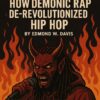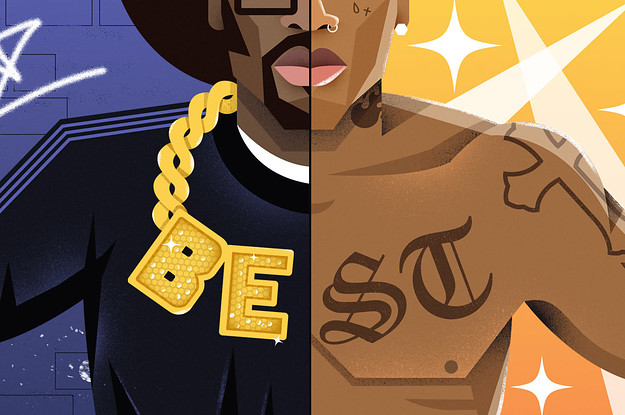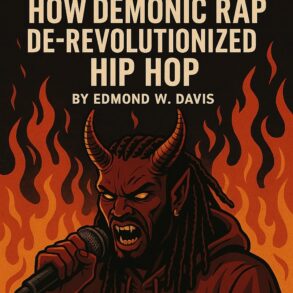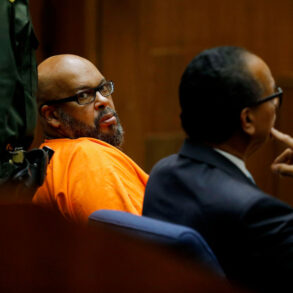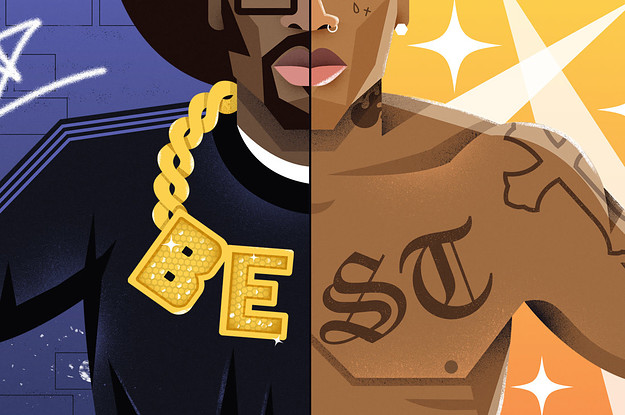
CREDENTIALS: No. 1 album debut, first solo single to hit No. 1, four Grammys
“To be the man, you got to beat the man.” — Ric Flair
Depending on how you viewed it, To Pimp a Butterfly was one of two things. To most, Kendrick‘s third full-length was the moment in which he bucked the mainstream and decided to follow his vision to create an abrasive, yet important, piece of art that spoke viscerally about the issues he believed to be afflicting the group of people with which he most closely identified.
To others, it was a tacit admission that, up until that point, when it came to creating popular rap music, he just wasn’t up the task. As much as TPAB was discussed and debated—much to the delight, we’re sure, of Kendrick, who said the album would wind up on university syllabi—it didn’t make much of a dent in the marketplace. It went platinum, but it sold less than Good Kid, M.A.A.D. City, and only one single managed to crack the top 40 of the Billboard Hot 100 chart.
For comparison’s sake, that same year Drake dropped two albums, each debuting at number one, each pregnant with hits that would dominate the charts, radio, playlists, and commercials for the entire year.
To Pimp a Butterfly and the album of outtakes that followed it were such aberrations from the center of rap that many wondered if Kendrick would ever return. Would he even continue to rap? Would he strike out as a jazz fusion artist? Would he take up spoken word full time? Would he ever answer the shots taken at him by Big Sean and Drake? Would he focus his time on more pressing issues and, by default, cede the crown to one of the aforementioned competitors? Did he even give a fuck about being the best rapper alive?
After a varied series of guest appearances, on March 23, 2017 we finally got our answer via “The Heart Part IV,” on which Kendrick addressed his doubtful, slick-talking peers, comforted his worried fans, and staked his claim as the king.
I put my foot on the gas, head on the floor
Hoppin’ out before the vehicle crash, I’m on a roll
Yellin’, “One, two, three, four, five
I am the greatest rapper alive”
Not only that, he announced that he was coming right back with another album that would further solidify his place in the game. And DAMN. did just that. This isn’t another experimental project meant to be debated and discussed in barbershops and on rap forums. DAMN., with production from Mike-Will Made, Sounwave, DJ Dhahi, 9th Wonder, and the Alchemist, and MCing from the legendary DJ Kid Capri, is meant to be bumped everywhere you listened to hot shit. It literally has something for everyone.
To run rap, you have to create music that applies to a multitude of scenarios and situations. You can’t be the best rapper alive if all you make is music that’s meant to be bumped in headphones. Or that only sounds good at ear-piercing decibels. Or lyrics that are better read on computer screens than recited back to you by rabid fans. Kendrick had all of that, and more. “HUMBLE.,” the first single from the album, and Kendrick’s first solo number one song, was a bop-inducing ditty that was immensely rappable thanks to its simple earworm of a chorus. It was like a photonegative of “The Blacker the Berry.”
Even more remarkable was that Kendrick seemingly conceded very little—if anything—creatively to make this album (which also debuted at number one) work. Yes, Rihanna and U2 are on the album, but it still features the same heady computation of the world and its inhabitants and institutions as heard on TPAB. Only this time the beats are banging in a way that’s closer to the center of rap. Or, put another way, they’re productions you could imagine his competition vying to use.
Sure, DAMN. could be seen as a tacit admission that the direction he had hoped to explore with his previous work wasn’t as commercially viable as he hoped. Or it could be seen as him deciding to follow his ambition to beat his contemporaries in their own arena. No matter how you view it, Kendrick Lamar proved himself to be the best rapper alive. —Damien Scott
HONORABLE MENTIONS: Jay-Z, Cardi B, Future
When it comes to pure artistic achievement, there was only one person sparring with Kendrick for the title of Best Rapper Alive last year. Jay-Z, weary and wiser for it, returned with an album that had no right to be the masterclass that it is. 4:44 doesn’t have the number one hits, the dazzling pyrotechnics, or the naked competitiveness that Kendrick brings to bear on DAMN. Instead, Jay acts his age—something we’ve never seen before, from any rapper. The result is a focused statement from a man trying to get you to listen and, more importantly, understand. Much was made of this being Jay’s apology album—it was, but it was much more than that. It’s the kind of album artists can usually only make at the beginning of their careers, jam-packed with every thought careening around their head, a definitive personal statement with the air of a conversation. In this case, you listen because it’s album number 13, and he’s not supposed to have anything left to say.
If Jay was interested in showing off he’s made it clear that he could still give anyone in the game—Kendrick included—a run for their money. Instead, he opted to make songs that sigh instead of roar. It was the right decision.
While K. Dot and Jay circled rap’s best album, Cardi B loudly dominated 2017. For those really in the know, this might have been expected. She’d long been the center of attention, mapping out a path to success from a strip club to Instagram to TV. Her leap to music was audacious, but it made sense that she would eventually reach new heights. For the uninitiated, Cardi B emerged, fully-formed, into a universe that she seemingly controlled through sheer force of will and an elementally magnetic personality. She reminded us that rap is a game of characters. Outsized, real figures, and it’s there that Cardi B truly excels. It’s impossible to stop watching her—she’s compulsively relatable, outspoken to a fault, and is something of an apex predator in the Instagram Era of rap personalities.
Of course, that would be nothing without good music. The jump from celebrity to rapper—a real jump that amounted to more than flash-in-the-pan attention—is a risky, improbable one. Cardi B has made it, sure-footed, thanks to a concentrated, three minute and 44 second-long distillation of her appeal called “Bodak Yellow.” It was a breakout hit—inescapable in New York for the entirety of the summer—eventually reaching number one on the Billboard charts (and unseating Taylor Swift on its way). More impressive than its commercial success, though, was how confidently it was pulled off. Despite quibbling claims of stolen flows (a kind of borrowing that’s both foundational to hip-hop and nodded to in the song’s title), “Bodak” is the Cardi show from start to finish. The song is stunningly charming and even more catchy—it’s Cardi to the core, which is why it achieved the success it did. “Bodak Yellow” was both an introduction and definitive statement, and the rare debut smash hit that serves as an announcement, not a career peak.
While Cardi’s rise took most of 2017 to gestate, Future opted to announce his presence straight out of the gate. Always a prolific studio rat, known for resuscitating his career by furiously distributing street rap that was better than any of his peers’, the surprise release of FUTURE was not actually a surprise. That’s what Future does: drop great music on a whim. What was surprising was what people latched onto as the album’s biggest hit: “Mask Off,” a pan flute-led, laconic piece of trap music that set off thousands of memes and more parties. What was even more surprising happened the week after FUTURE, when Nayvadius dropped HNDRXX.
If Future had made the prospect of a surprise album something closer to an expectation, he blew the concept out of the water when he did it twice in two weeks. More impressive than the sheer productivity, though, was how assured the two projects were. This wasn’t a song dump, generated to flood the market, but a calculated attack on two fronts. The design became clear when the projects were laid out together: FUTURE the brutalist, scorched-earth piece of bass-boosted antagonism that took Future’s hard-won persona to its logical extreme, and HNDRXX the formally inventive peeling back of layers to hint at some empathy behind the mirrored sunglasses, as well as an artistic path forward for one of rap’s best songwriters. —Brendan Klinkenberg
This post was originally published on this site be sure to check out more of their content.


